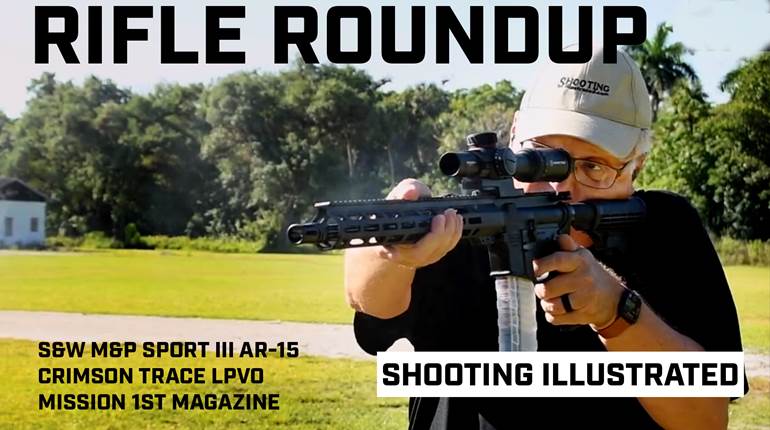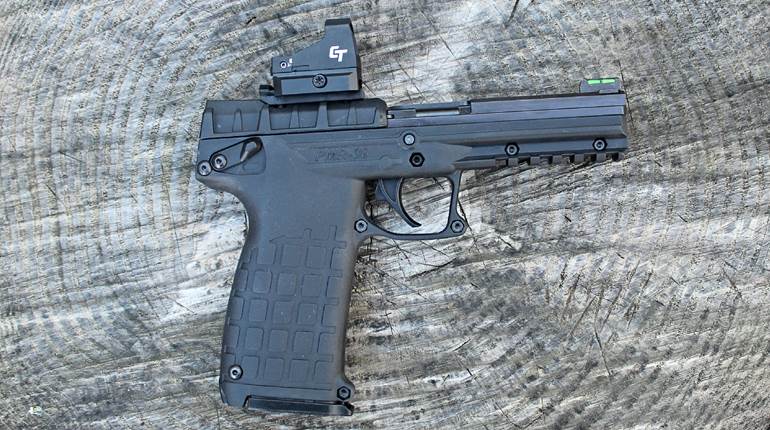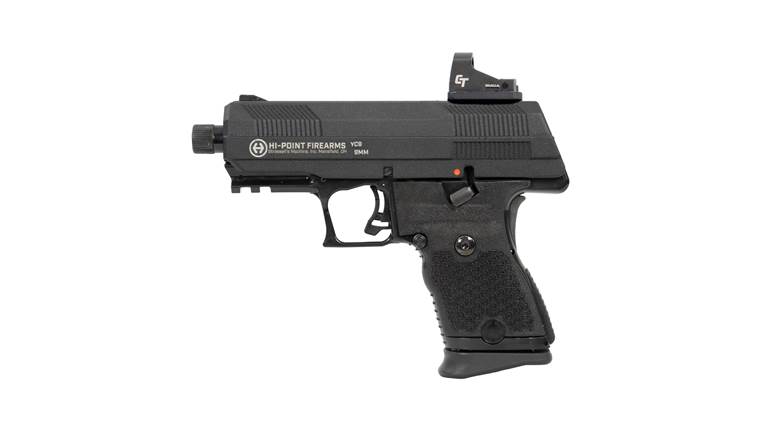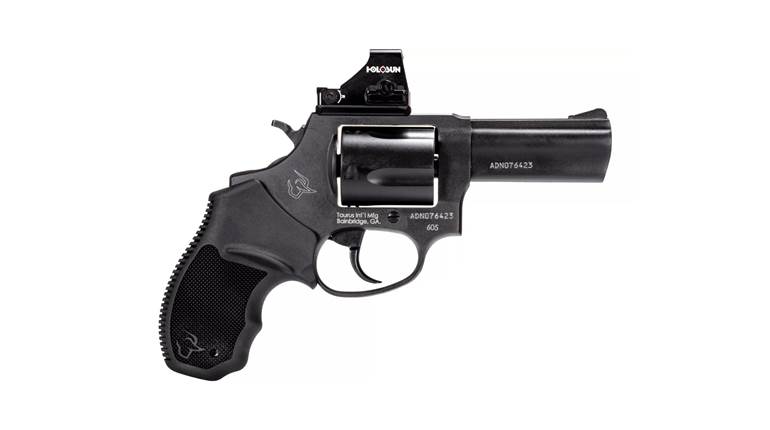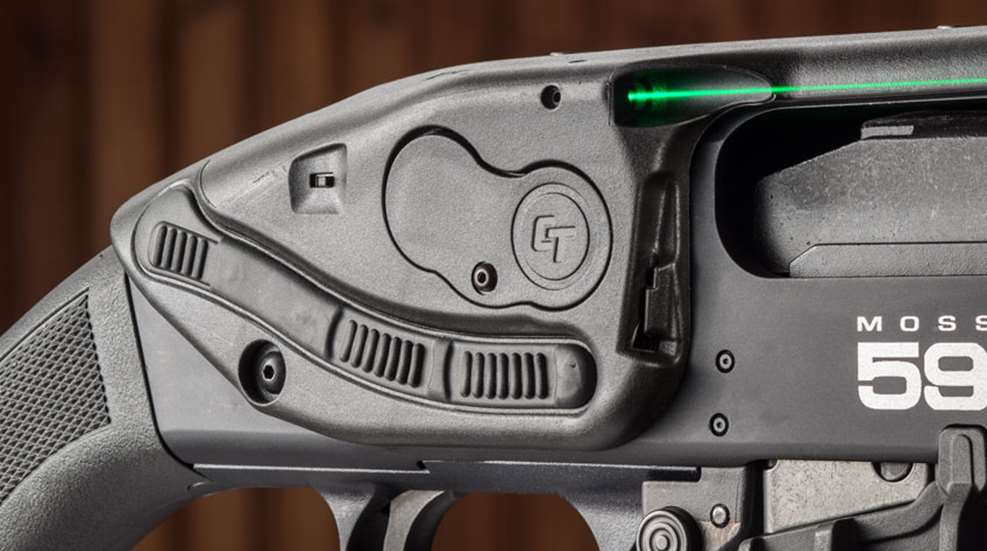
Since essentially creating the firearm-mounted laser sight industry back in 1994, Crimson Trace has steadily expanded its product lineup in order to offer sighting systems compatible with an ever broadening swath of guns on the market. In late 2018, the Oregon-based company brought its first dedicated shotgun laser sight to the consumer—the LS-250 Lasersaddle. Available in both red- and green-laser versions, the green iteration of this innovative new product, the LS-250G, is the subject of this review.
Designed for use with pump-action 12-ga. Mossbergs—including Model 500/590 shotguns and the Shockwave—the Lasersaddle is a lightweight, low-profile polymer unit that wraps around the top and right surfaces of the host’s receiver. A laser emitter located at the vertex of the housing’s two sides produces a 5-milliwatt beam that projects forward along the upper right side of the gun. It subtends to 0.5" at 50 ft.
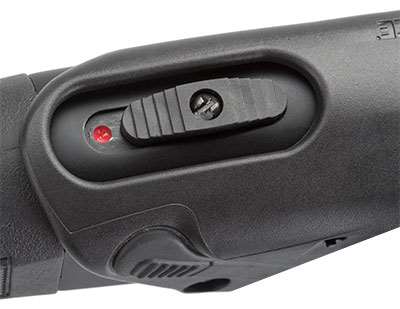
Crimson Trace designed the Lasersaddle with three activation pads, all located so that they ride the right side of the host firearm’s receiver. The bottom two are positioned directly above the trigger guard for use by a right-handed shooter’s trigger finger. The third pad, farther back toward the host’s tang, is most easily actuated by a left-handed user’s thumb. All three are constant-on/constant-off pressure pads.
Also found on the right side of the Lasersaddle are a master on/off switch and a flush-fitting battery compartment. The LS-250G utilizes four CR2016 batteries and offers approximately two hours of continuous use, while the red-laser model instead takes two CR2032 batteries and enjoys a longer, four-hour battery life. With either variant, the batteries can conveniently be changed without removing the sight from the firearm.
The company configures the Lasersaddle for a 50-ft. zero at the factory, and throughout approximately 100 rounds of heavy-recoil testing, the zero did not wander. However, inserting an included hex key into small holes in the laser emitter allows the user to engage set screws that shift the laser’s point of impact to meet his or her needs. The top screw adjusts the sight’s elevation; the side screw alters the windage.
Installation is simple, taking about five minutes using only the tools included with the Lasersaddle, and the process is equally easy to reverse, should the shooter ever want to remove the unit. It’s simply a matter of pushing out the Mossberg’s trigger housing pin and removing the four factory screws located in the top of the receiver, positioning the housing into place, then installing the supplied Crimson Trace trigger housing pin and elongated receiver screws. Very light and unobtrusive, the Lasersaddle weighs only about 2 ozs., and features a cutout in the top of the housing for access to the Mossberg’s tang-mounted safety—and use of the sight does not preclude the installation of an accessory rail atop the host’s receiver.
In testing the sight, we first installed the LS-250G aboard a 12-ga. Shockwave and then a Mossberg 590M in order to verify compatibility with both platforms, and experienced no complications of any kind in doing so. While the aiming point of the Lasersaddle offered quicker target acquisition with both hosts, its utility when paired with the Shockwave was especially apparent. Raising this firearm up to eye level in order to aim it can be a dicey proposition—particularly in its 12-ga. guise—and the Lasersaddle allowed shooters to make fast, accurate shots, even from the hip, while requiring zero rail space.
At present, the Lasersaddle is suitable for use only with Mossberg’s 12-ga. pump-actions, as the receivers of the smaller gauges are scaled differently, and the placement of the trigger housing pin on the company’s semi-automatic Model 930s render them incompatible with the LS-250G. But here’s hoping that Crimson Trace is already working on new SKUs of the Lasersaddle that are compatible with additional gauges, actions and manufacturers/makes, as we found it to be a durable and relatively inexpensive accessory that adds real functionality to the firearms onto which it is installed. MSRP: $219. Contact: Crimson Trace; (800) 442-2406; crimsontrace.com.












